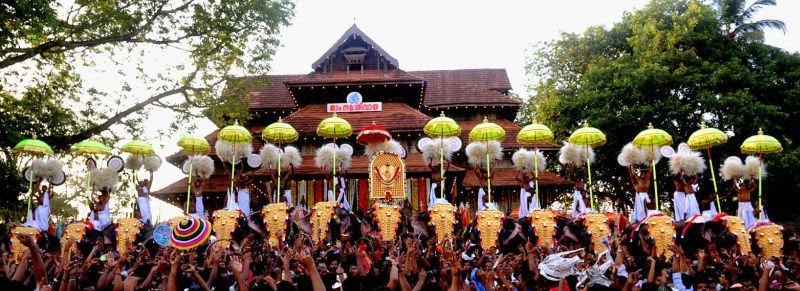Attukal Pongala is a famous festival in Kerala when millions
of women gather at Attukal Devi Temple to offer pongala to the goddess. Pongala
is cooked rice mixed with ghee, jaggery, coconut, and many other ingredients.
Women will bring all the material and will cook in public and will then offer
it to the goddess. This festival has been regarded as the largest gathering of
women on a single occasion. It is a world record too.
The legend behind Attukal Devi Temple goes back to the period
of Kannaki and Kovilan. Kovilan was a rich businessman in Madurai and he
married Kannaki. Although they were leading a happy married life initially, the interference of a beautiful dancer in their life turned everything upside down.
Kovilan used to spend more time with the dancer and he spent all his earnings
on her. When he became bankrupt, the dancer threw him out of her house and he
had to come back to Kannaki. By that time almost all wealth has been spoiled
and only a pair of anklets was left with Kannaki. She is a loving and caring
wife who did not mind supporting her husband. She asked him to sell one of the
anklets and to start a new business with that money.
Kovilan went out to sell the anklet. Unfortunately, on the
previous day, a theft happened at the palace of Madurai King and the queen's
anklets were missing. Those anklets were similar in shape with that of Knnaki.
Hence the jeweler whom Kovilan approached to sell the anklet suspected him as
the thief and informed the king. King’s army men came and took him to the
palace along with the anklet. Even without enquiring about the truth, the King ordered
to behead him and his people did the same.
Hearing the news of her husband Kannaki came to the palace
in anger and threw the other anklet in front of the king. It broke and rubies
have come out of it. Actually, there were pearls in the queen’s anklet. Now
everybody realized the innocence of Kovilan. Anyhow, Kannaki was not in a mood
to forgive the king and his kingdom. She cut one of her nipples and threw it
towards the city. The entire city gutted in fire suddenly and the goddess of city
appeared in front of her and gave her salvation.
 |
| A scene from Attukal Pongala |
Now she decided to move towards Kerala and to be there in
Kodungalloor. On the way to Kodungalloor, she passed through
Thiruvananthapuram. At that time she was disguised as a small girl. Reaching on
the banks of a river, she saw an old man there and requested him to help her to
cross the river. Seeing a small girl, he took her to his house instead of
helping her to cross the river. Suddenly the girl disappeared. On that night
the goddess Kannaki came in the dreams of that old man and asked him to
construct a temple in his compound and install her idol there. That temple
later came to known as Attukal Devi Temple.












